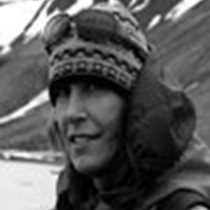Glacier Bay National Park
For many, Glacier Bay itself is one of the greatest allures of Southeast Alaska. A spot on the earth that, two hundred years ago, was covered in ice? A spot where John Muir came to puzzle out the dynamic interaction of land and glacier? It has dramatic history. It has a lot to live up to. Today, not one person aboard could say that the bay did not exceed expectation.
Our day began under high clouds and glossy seas. Even before our wakeup call, we’d seen dozens of otters, murrlets and murres, and even a stray puffin or two. At South Marble Island, we enjoyed stinky sea lions and sea birds galore. Black-legged kittwakes flushed from the cliffs in waves, protesting the close approach of bald eagles. The water was speckled with a rich assortment of alcids: tufted puffins, common murres, and pigeon guillemots paddled and preened. We were even treated to a rare and fantastic view of a pair of horned puffins.
There’s much to see in Glacier Bay—the mountains tower and command attention. The rocks tell stories of what weather and climate have passed across them. And the animals! On Gloomy Knob, the mountain goats were low and frisky. Nannies and kids scampered over the rocks, defying death with their Velcro-hooved antics. We even had a couple of rebel goats explore a rocky beach—very unusual behavior for these lovers of steep faces.
As we made our way toward Russell Cut, a narrow and productive passageway, a young brown bear caught our attention. Luckily, he decided to explore a segment of coastline that was approachable by the Sea Lion. For almost an hour, we watched him turn over large rocks and pop clusters of blue mussels into his mouth like bunches of grapes.
At the head of Tarr Inlet, the furthest one can progress into Glaicer Bay, we were rewarded with spectacular “white thunder.” Margerie Glacier dropped nearly its entire face into the water, rocking the Sea Lion with aftershock waves. This glacier can often be quite calm, as it does not flow extraordinarily quickly down from its source. Today, however, it was restless. Who were we to object? We loved every big, splashy minute of it.
It would be easy to call that enough. Our trip down-bay, however, was not uneventful. Riding under bright, clear skies with the wind, we shed hats and coat as we sailed by slopes still covered with a bit of snow. In Geikie Inlet, a pigeon guillemot in winter plumage surprised us, popping up as we watched a black bear browse as it stretched up into the shoreside vegetation. It’s amazing what a day of steady and concentrated looking can reveal. We hope our eyes remained so attuned to what this landscape can offer in the coming day.
For many, Glacier Bay itself is one of the greatest allures of Southeast Alaska. A spot on the earth that, two hundred years ago, was covered in ice? A spot where John Muir came to puzzle out the dynamic interaction of land and glacier? It has dramatic history. It has a lot to live up to. Today, not one person aboard could say that the bay did not exceed expectation.
Our day began under high clouds and glossy seas. Even before our wakeup call, we’d seen dozens of otters, murrlets and murres, and even a stray puffin or two. At South Marble Island, we enjoyed stinky sea lions and sea birds galore. Black-legged kittwakes flushed from the cliffs in waves, protesting the close approach of bald eagles. The water was speckled with a rich assortment of alcids: tufted puffins, common murres, and pigeon guillemots paddled and preened. We were even treated to a rare and fantastic view of a pair of horned puffins.
There’s much to see in Glacier Bay—the mountains tower and command attention. The rocks tell stories of what weather and climate have passed across them. And the animals! On Gloomy Knob, the mountain goats were low and frisky. Nannies and kids scampered over the rocks, defying death with their Velcro-hooved antics. We even had a couple of rebel goats explore a rocky beach—very unusual behavior for these lovers of steep faces.
As we made our way toward Russell Cut, a narrow and productive passageway, a young brown bear caught our attention. Luckily, he decided to explore a segment of coastline that was approachable by the Sea Lion. For almost an hour, we watched him turn over large rocks and pop clusters of blue mussels into his mouth like bunches of grapes.
At the head of Tarr Inlet, the furthest one can progress into Glaicer Bay, we were rewarded with spectacular “white thunder.” Margerie Glacier dropped nearly its entire face into the water, rocking the Sea Lion with aftershock waves. This glacier can often be quite calm, as it does not flow extraordinarily quickly down from its source. Today, however, it was restless. Who were we to object? We loved every big, splashy minute of it.
It would be easy to call that enough. Our trip down-bay, however, was not uneventful. Riding under bright, clear skies with the wind, we shed hats and coat as we sailed by slopes still covered with a bit of snow. In Geikie Inlet, a pigeon guillemot in winter plumage surprised us, popping up as we watched a black bear browse as it stretched up into the shoreside vegetation. It’s amazing what a day of steady and concentrated looking can reveal. We hope our eyes remained so attuned to what this landscape can offer in the coming day.



